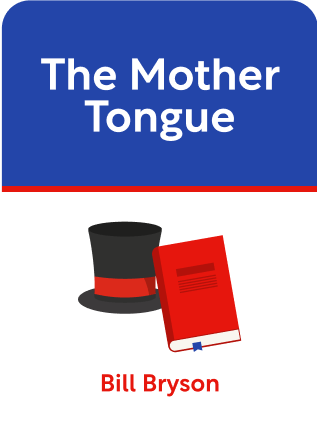

This article is an excerpt from the Shortform book guide to "The Mother Tongue" by Bill Bryson. Shortform has the world's best summaries and analyses of books you should be reading.
Like this article? Sign up for a free trial here .
Is language an invention or an intrinsic trait? What are the exact mechanisms that gave rise to the phenomenon of symbolic language?
Language is undoubtedly one of the greatest human inventions of all time, although the question of whether symbolic language is an invention or an intrinsic feature of the human species is a matter of semantics. There’s some archaeological evidence that language arose during the Cro-Magnon period, but the exact mechanisms behind its development are unknown.
Keep reading to learn about the invention of the human language.
Language Is Humanity’s Greatest Invention
All human societies feature one crucial building block of social organization—language. The spoken and written word is what binds individuals together and helps us form stable communities
Human language probably began with prehistoric Cro-Magnon man and became more complex with the arrival of Homo sapiens tens of thousands of years ago. The bigger brains of Homo sapiens likely helped the development and sophistication of language, which, in turn, provided an evolutionary advantage for Homo sapiens over other hominids because it made communication and social cohesion a lot easier.
The precise mechanisms behind the invention of human language are unknown, but some linguists think that onomatopoeia (words like boom or clap that phonetically mimic the sounds they describe) may have played a role in catalyzing the process, as humans would have sought a way to communicate the natural sounds they heard.
Some of the most interesting and insightful work on the invention of language has been done through the study of how children first learn and acquire it. Noam Chomsky observed that even newborn infants seem to possess some innate understanding of language and a basic template for how words are supposed to be ordered and sequenced. For example, before they turn two, most children seem to grasp the difference between stative (“I like bananas”) and non-stative verbs (“I am liking bananas”) and rarely ever make this grammatical mistake again.
The Indo-European Language Family
Linguists have discovered that many of the languages spoken in Europe and Asia today, as well as many languages of the ancient world, belong to one great Indo-European family of languages. There are even linkages between languages separated by vast reaches of space, like the Basque spoken in some parts of Spain and certain Native American languages.
Linguists have yet to discover a single master Indo-European parent language or identify the precise geographical area where it may have originated. They believe that languages became differentiated and unique once the original tribal group began to spread out across the Eurasian landmass between 2,500 and 3,500 BCE, giving rise to languages across an area stretching from the Scottish Highlands to Sri Lanka.
Latin, perhaps the most famous language of the ancient world and the tongue of the Roman Empire, belongs to the Indo-European language family. The spread of the Empire across most of Europe kickstarted the historical processes that led to the Romance languages—those that have their roots in Latin—including French, Italian, Spanish, and Romanian.

———End of Preview———
Like what you just read? Read the rest of the world's best book summary and analysis of Bill Bryson's "The Mother Tongue" at Shortform .
Here's what you'll find in our full The Mother Tongue summary :
- How English became a global language
- How the invention of the printing press led to standardization of written English
- Why English dictionaries are the most comprehensive found in any language





